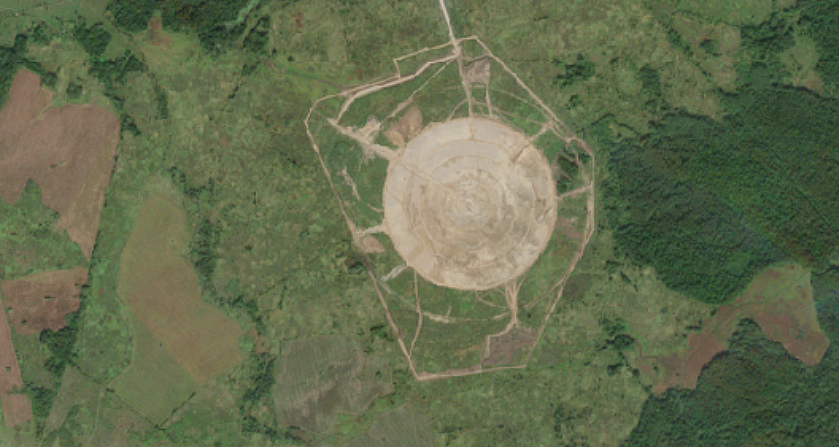A massive circular structure, spanning the diameter of 12 football fields, has appeared in Russia, just 15 miles from the Polish border.
Others are reading now
Named “The Monster of Kaliningrad,” this structure has intrigued those monitoring Russian military sites via publicly available satellite images.
Located in Kaliningrad, a Russian enclave situated between Poland and Lithuania along the Baltic Sea, this structure’s strategic position is crucial for Russia in Eastern Europe, providing maritime access and significant military presence near NATO.
According to French media Linternaute, The structure, with an impressive diameter of 1300 yards, is situated near the Chernyakhovsk air base, a little over 15 miles from the Polish border. Described as the “Monster of Kaliningrad,” it appears to be linked to Russia’s new 29B6 Container radar system. The first Container was commissioned in 2013 in the Mordovia region, about 310 miles southeast of Moscow.
In March 2020, the Russian state agency reported that a second Container would be erected in Kaliningrad. At that time, the Russian defense industry sources were searching for suitable locations for the radar, with no details revealed about the construction timeline or the system’s operational date.
Also read
The Container is an “over-the-horizon” radar system. According to Russian sources, this long-range surveillance radar can track missile launches or large groups of aircraft over 1.864 miles away. The Kaliningrad radar aims to cover all of Europe, including Great Britain, as stated by the Russian state agency.
Long-range surveillance radars are part of Russia’s early warning system. The Container consists of a transmitting station and a receiving station. Satellite images show one of the stations located about 9 miles southwest of the gigantic structure. The construction progress of the radar station can be followed through a compilation of images from the Radio & Nukes account on X (formerly Twitter), a social media account sharing open-source research.



